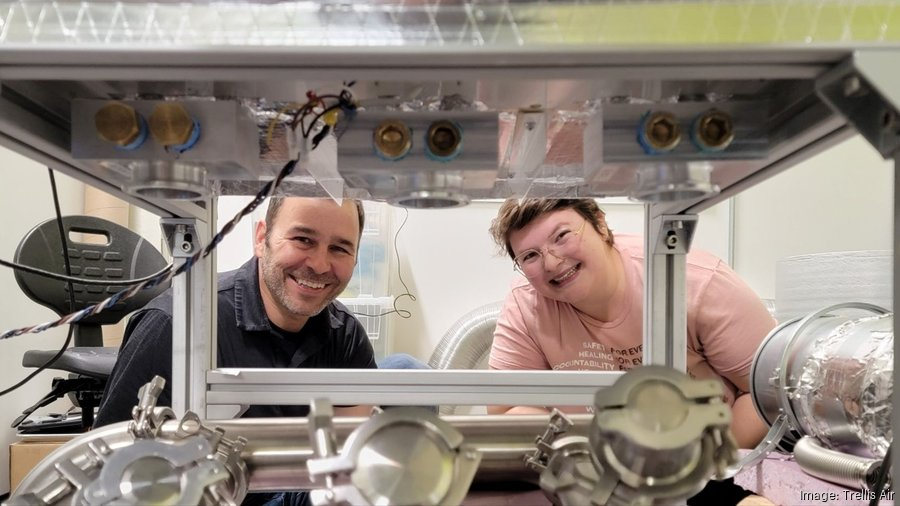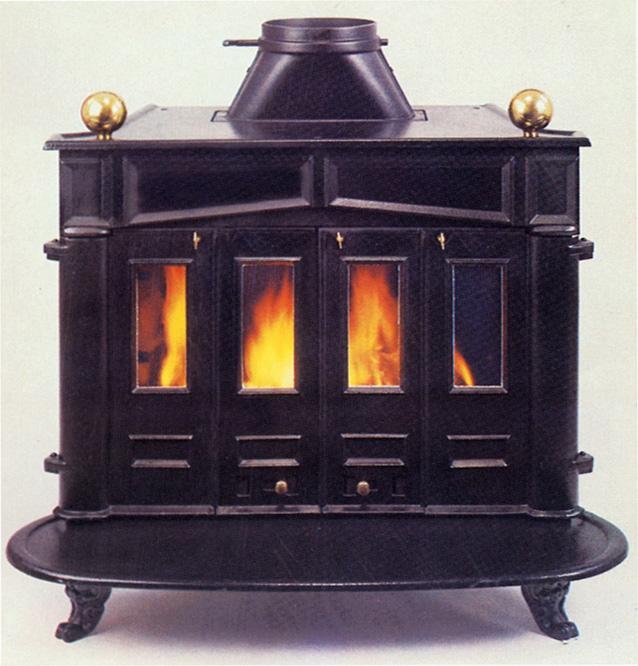Trellis Air technology is emerging as a groundbreaking air conditioning innovation designed to revolutionize how we cool our spaces. Developed by a Harvard startup, this novel approach leverages membrane dehumidification to deliver energy-efficient cooling solutions for a world facing the challenges of climate change. With the demand for air conditioning set to surge significantly in the coming years, Trellis Air technology presents a timely and efficient option that promises to cut energy consumption while maintaining optimal comfort. Utilizing a unique membrane system that functions much like a coffee filter, it efficiently separates water vapor, offering a sustainable alternative to conventional cooling methods that contribute heavily to greenhouse gas emissions. As the climate crisis intensifies, Trellis Air stands at the forefront of climate change solutions, making strides toward a more energy-conscious future for air conditioning systems.
The innovative Trellis Air system represents a shift in how we perceive cooling technology. As a frontrunner in the quest for sustainable air conditioning methods, this cutting-edge solution utilizes advanced membrane technology to enhance dehumidification processes, thereby achieving a higher efficiency rating than traditional air conditioning units. This novel application stands out in the growing market for energy-efficient climate control alternatives, addressing the urgent need for significant reductions in energy use associated with temperature regulation in residential and commercial spaces. By focusing on moisture removal and energy optimization, Trellis Air technology not only aims to redefine air conditioning efficiency but also contributes vital advancements in the global effort against climate change.
Understanding Trellis Air Technology
Trellis Air technology represents a groundbreaking advancement in air conditioning systems, leveraging membrane dehumidification to provide energy-efficient cooling solutions. This innovative approach allows for moisture extraction from ambient air without the need for traditional refrigerants, which are notorious for their high global warming potential. By mimicking the action of a coffee filter, Trellis Air’s unique membrane operates efficiently and sustainably, addressing both air cooling and humidity control. This technology could potentially reshape the landscape of how we cool our living and working spaces.
The impetus behind Trellis Air was to provide an alternative to conventional air conditioning methods that have remained largely unchanged for over a century. As concerns about climate change escalate, the demand for energy-efficient cooling solutions has never been more critical. Trellis Air is at the forefront of this revolution, offering a sustainable solution that combats excessive energy consumption associated with traditional AC systems. With this innovation, the startup not only promotes energy savings but also aligns itself with wider climate change solutions that are essential for our future.
The Role of Harvard’s Research in Creating Energy-Efficient Cooling
The research and development efforts emerging from Harvard University have laid a solid foundation for the revolutionary Trellis Air technology. Led by a dedicated team of scientists and engineers, including the collaborative work of Peteris Lazovskis, Jonathan Grinham, and other experts, the project emphasizes the marriage of scientific inquiry and engineering prowess. Through various experiments and prototypes, the team successfully developed a membrane that is thinner than a human hair yet capable of efficiently separating water vapor from the air—a significant leap towards creating energy-efficient cooling systems.
The initial funding from the Wyss Institute and support from the U.S. Department of Energy were pivotal in translating theoretical concepts into tangible prototypes. This groundwork allowed for extensive testing and validation of the Trellis Air system under real-world conditions. As the Harvard team moves forward, they continue to refine the technology, ensuring it meets commercial viability while tackling the urgent challenges posed by climate change. Their work is a prime example of academia producing practical innovations that could reshape industries and significantly lower global energy consumption.
Comparison with Traditional Air Conditioning Systems
Traditional air conditioning systems have long relied on vapor-compression technology, which is often energy-intensive and emits significant greenhouse gases. In contrast, Trellis Air’s approach through membrane dehumidification offers a more eco-friendly solution. By eliminating the need for chemical refrigerants and minimizing energy use, Trellis Air systems aim to cut down on emissions while providing effective cooling. This not only aids in reducing the carbon footprint of air conditioning but also addresses the increasing cooling demands as global temperatures rise.
In addition, the simplicity of Trellis Air’s technology could lead to easier maintenance and lower operational costs over time. With conventional air conditioning units, the complexity of components can lead to higher failure rates and energy inefficiencies. By streamlining the cooling process and focusing on moisture removal, Trellis Air offers a solution that is not only efficient but also sustainable, showcasing the potential of innovative technologies to replace outdated methods within the industry.
Tackling Climate Change Solutions with Innovative Cooling Technology
As climate change intensifies, the demand for effective cooling solutions is rising. Trellis Air addresses this issue head-on by offering a more sustainable alternative to conventional cooling methods. By drastically reducing energy consumption associated with traditional air conditioning, Trellis Air not only curtails greenhouse gas emissions but also paves the way for a more sustainable future. The potential impact of this technology on climate change solutions is significant, highlighting the need for innovative approaches to energy usage in cooling systems.
The startup’s commitment to energy efficiency aligns with global efforts to mitigate climate change effects. With rising temperatures and increasing reliance on air conditioning systems, Trellis Air’s technology could significantly alleviate the stresses on our energy grids and help lower the overall demand for non-renewable energy sources. Moreover, by implementing this advanced cooling solution on a large scale, there is potential for widespread adoption across various sectors, ultimately contributing to global efforts in climate action.
The Business Potential of Trellis Air Solutions
Trellis Air’s innovative cooling technology not only addresses environmental concerns but also presents vast business opportunities within the air conditioning market. The estimated global AC market is expected to expand significantly, especially as developing countries ramp up their energy needs. By positioning itself early in this market with a unique product that enhances cooling efficiency, Trellis Air is strategically placed to capitalize on this growing demand. Their plans include replacing outdated desiccant systems and improving existing dehumidifying solutions, opening doors to numerous commercial ventures.
Moreover, Trellis Air’s approach could attract investment from stakeholders interested in helping to combat climate change while achieving economic returns. The ability to market the technology as a pre-drying module that significantly boosts the efficiency of existing air conditioning systems will likely appeal to both consumers and large-scale manufacturers alike. With substantial energy savings and environmental benefits, Trellis Air’s market entry into the HVAC industry could potentially reshape how businesses and individuals approach air conditioning, making it a financially and ecologically sound choice.
Testing and Validation of Trellis Air Technology
Prototyping and field testing are critical steps in bringing Trellis Air’s technology to market. The team has successfully conducted trials in diverse environments, including Miami’s hot, humid climate, and the controlled setting of Harvard’s HouseZero. These prototypes are instrumental in demonstrating the efficiency and reliability of the new cooling solution under real-world conditions. The hands-on data collected during these tests are essential for refining the product before its commercial launch.
The results from initial tests have showcased the effectiveness of Trellis Air’s membrane dehumidification technology, providing proof that it can indeed function as advertised. Early indicators suggest that the system minimizes energy use while maintaining comfort levels, signaling that this innovative solution could be the future of air conditioning. By addressing efficacy through rigorous testing, Trellis Air not only builds credibility but also reassures potential investors about the technology’s viability.
Collaborative Efforts in Developing Trellis Air
The development of Trellis Air has been a collaborative effort among researchers at Harvard, combining expertise in engineering, materials science, and architectural design. This multidisciplinary approach has been instrumental in overcoming the challenges associated with creating a functional and scalable membrane. The ongoing collaboration between scientists and the startup ensures a strong foundation of knowledge and innovation poised for commercial success.
Furthermore, partnering with institutions such as the Wyss Institute and leveraging support from the U.S. Department of Energy has provided Trellis Air with critical resources and funding needed for development. This collaborative strategy not only aids in technological advancement but also supports the startup’s goal of addressing larger societal challenges—namely, the urgent need for sustainable climate solutions through energy-efficient cooling technologies.
The Future of Air Conditioning: A Leap Towards Sustainability
As Trellis Air technology evolves, it stands as a testament to the potential shifts within the air conditioning industry towards more sustainable practices. With the global push for eco-friendly solutions, Trellis Air is positioned to lead the way in transforming how we view cooling technologies. The future of air conditioning holds promise, with Trellis Air paving the path towards methods that prioritize energy conservation and environmental stewardship.
The implications of adopting such sustainable technologies extend beyond just energy savings; they encompass societal health impacts, reducing the heat island effect in urban settings, and working towards combating climate challenges. As Trellis Air continues to refine and promote its innovative systems, there is hope that sustainable air conditioning becomes the norm rather than the exception. The journey to a cooler world, with less impact on our planet, is only beginning.
Frequently Asked Questions
What is Trellis Air technology and how does it address climate change solutions?
Trellis Air technology is an innovative air conditioning solution developed by a Harvard startup that employs membrane dehumidification to provide energy-efficient cooling. This approach significantly reduces the energy consumption associated with traditional cooling systems, addressing the growing demands for climate change solutions as the world faces rising temperatures and increased greenhouse gas emissions.
How does Trellis Air’s membrane dehumidification system work compared to traditional air conditioning?
Unlike traditional air conditioning systems that rely on chemical refrigerants, Trellis Air’s membrane dehumidification technology works like a coffee filter, efficiently separating water vapor from the air. This method substantially lowers energy use while maintaining stable environmental conditions in buildings, marking a significant innovation in air conditioning.
What are the energy-efficient cooling benefits of Trellis Air technology?
Trellis Air technology offers energy-efficient cooling by utilizing a unique membrane that requires less energy to extract moisture from the air compared to conventional air conditioning systems. This reduces energy costs and greenhouse gas emissions, contributing to more sustainable climate solutions.
What role did Harvard scientists play in the development of Trellis Air technology?
Harvard scientists, including researchers from the Aizenberg Lab, collaborated to invent and prototype the Trellis Air membrane system. This teamwork combined raw scientific knowledge with engineering breakthroughs, enabling the development of a cutting-edge solution for energy-efficient cooling.
Why is Trellis Air considered a significant innovation in air conditioning innovation?
Trellis Air is considered a significant innovation in air conditioning because it presents a ‘third way’ of cooling and dehumidifying air without the heavy reliance on harmful refrigerants. By creating a more sustainable and energy-efficient solution, Trellis Air technology has the potential to transform the air conditioning industry, particularly in mitigating climate change impacts.
Can Trellis Air technology replace traditional dehumidifiers and air conditioning systems?
Yes, Trellis Air technology has the potential to replace traditional dehumidifiers and enhance the efficiency of existing air conditioning systems. By integrating Trellis Air’s pre-drying module, existing cooling units can operate more efficiently, leading to reductions in energy use and emissions.
What future applications can we expect from Trellis Air technology?
Future applications of Trellis Air technology may include integration into various types of air conditioning systems worldwide, replacement of traditional desiccant systems in industrial settings, and upgrades for residential dehumidifiers, thus broadening its impact on the market.
How does Trellis Air aim to impact air conditioning needs by 2030?
With the projected increase in air conditioning needs by up to 40% by 2030 due to climate change, Trellis Air aims to offer energy-efficient cooling solutions that meet rising demand while significantly decreasing energy consumption and associated emissions, promoting a healthier environment.
| Key Points | Details |
|---|---|
| Research Background | Peteris Lazovskis holds a Trellis Air membrane as part of Harvard’s groundbreaking research. |
| Climate Impact | Cooling systems account for up to 4% of global greenhouse gas emissions, significantly higher than air travel emissions. |
| Innovative Solution | Trellis Air uses a novel membrane technology to dehumidify air more efficiently, operating like a coffee filter. |
| Energy Efficiency | The new system is designed to reduce energy consumption significantly compared to traditional methods. |
| Commercial Potential | Trellis Air has the potential to disrupt the cooling market, aiming for substantial savings in energy use. |
| Prototyping and Testing | Prototypes have been tested in Miami and at Harvard’s HouseZero for real-world data collection. |
| Research Collaboration | The project involved collaboration among Harvard researchers, enhancing its innovation capabilities. |
| Future Goals | Trellis Air seeks to integrate its technology into existing AC systems worldwide. |
Summary
Trellis Air technology represents a significant breakthrough in cooling systems, offering innovative solutions to tackle the rising energy demands associated with air conditioning. As global temperatures soar, the need for efficient cooling methods becomes increasingly critical. With its unique membrane that effectively dehumidifies air, Trellis Air’s approach not only reduces energy consumption but also minimizes greenhouse gas emissions related to cooling. This groundbreaking development positions Trellis Air as a pivotal player in transforming the air conditioning industry towards a more sustainable future.



